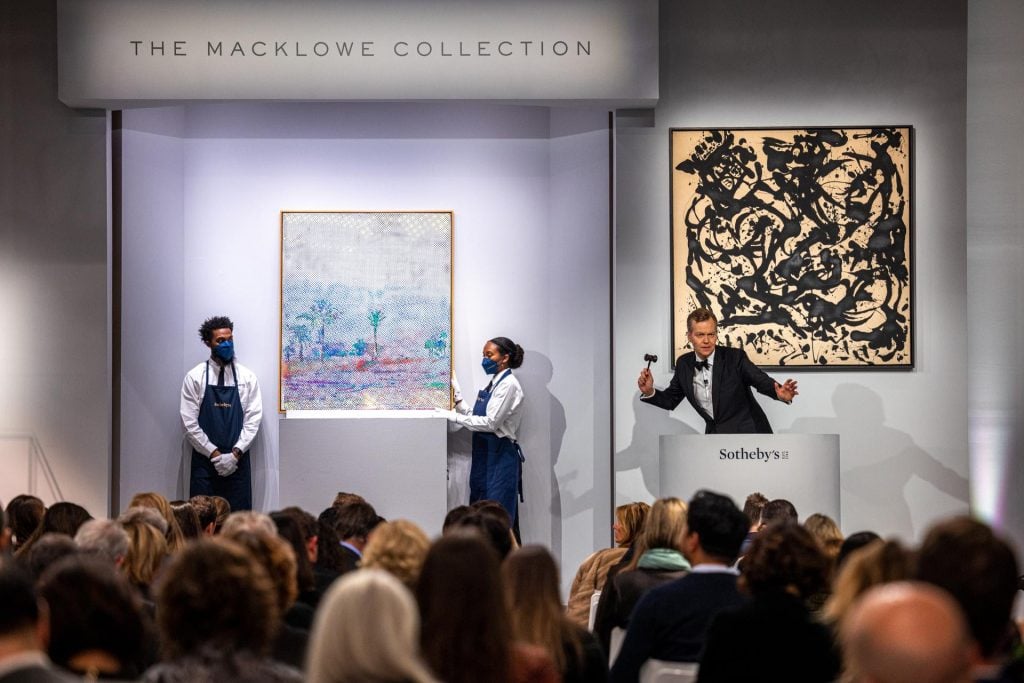CLIMATE CYNIC
The sheer damage to basic infrastructure caused by the flooding is catching everyone unprepared
Author of the article:Terry Glavin
Publishing date:Nov 16, 2021

Abandoned transport trucks are seen on the Trans-Canada Highway in a flooded area of Abbotsford, British Columbia, on Tuesday, Nov. 16, 2021.
PHOTO BY DARRYL DYCK /Canadian Press
VICTORIA — At some point in the coming days the penny will drop, and we’ll all be seized of the implications attending to the ongoing disaster on Canada’s west coast. First the rain, then the wind, and soon, everything will be freezing. For starters, if you think the Canadian economy is beset by global “supply chain” bottlenecks now, you just wait.
The Port of Vancouver, North Fraser, Fraser-Surrey Docks and Deltaport are now cut off from the rest of Canada, by road and by rail. Both CN Rail and CP Rail are assessing the extent of the damage to their rail lines in the Fraser Valley and Fraser Canyon districts. Neither company knows when the trains will be moving again.
The worst rail disruptions may last only a few days, but the Coquihalla Highway — the main road route connecting Metro Vancouver with British Columbia’s southern interior and points east, with roughly three-quarters of a million commercial truck transits every year — is gone. Deputy British Columbia Premier Mike Farnsworth says it may take “several weeks or months” to re-open the highway.
Owing to several washouts and mudslides, the old southerly route — Highway 3, snaking through the Cascades, Monashees and Selkirk mountains to the Crowsnest Pass in the Rockies — is impassable. The Fraser Canyon route, northward from Hope, about 130 kilometres east of Vancouver, has been smashed by rockslides and waterfalls that burst out of nowhere from the Coast mountains over the weekend.
CP Rail is looking to divert shipping traffic via Portland, Oregon, but restoring east-west overland connections by American routes won’t be easy. Washington State is a mess, too. Floodwaters from the Nooksack River have poured across the Canada-U.S. border into the Fraser Valley. Sumas Lake, an ancient waterbody drained to create farmland back in the 1920s, is a lake again today. Thousands of people have been evacuated.
About 280 kilometres east of Vancouver by a now non-functioning road, the Tulameen and Similkameen Rivers broke their dykes and burst their banks on Monday, and the rivers are now flowing through much of the town of Princeton. The temperature is dropping below freezing, the natural gas line that heats local homes is broken, the town’s water systems are wrecked, and nobody knows when things will be “normal” again.
While Princeton was drowning, the Coldwater River was venting its rage on the town of Merritt, 90 kilometres north of Princeton, and the entire community has been shut down because of the “immediate danger to public health and safety.” Roughly 7,000 people have been ordered to make their way to emergency centres in Kamloops and Kelowna.
And that’s just a snapshot of the misery British Columbians are enduring.
The devastation from last summer’s heat wave and its wildfires disrupted rail and road transport too, and while the immediate human cost was far greater, it was nothing like this, in terms of damage to basic infrastructure and transportation capacity. Five months ago the province was on fire and everybody prayed for the healing rain, but B.C.’s provincial authorities appear to have been as unprepared for the shock of the “atmospheric river” that has deluged British Columbia as they were for the “heat dome” that hovered over the province for those six brutal days in June.
The heat broke dozens of temperature records. The town of Lytton was quickly incinerated following several days of killing heat. At one point Lytton was 49.6 C, hotter than anywhere on any day in Canadian history, hotter than Death Valley that day, hotter than anything ever recorded above the 45th parallel anywhere on the planet. And yes, of course what happened last summer, and what is happening now, are catastrophes consistent with models developed by the International Panel on Climate Change, going back decades, that predicted extreme weather events set in motion by global warming.
And yes, the just-concluded COP26 extravaganza in Glasgow was seized of all this, despite the chasm that persists between what the world’s presidents, prime ministers, strongmen and supreme leaders say they’re prepared to do, and what the loudest activist voices say we all need to do. But we could do with a lot less of the punditry making the rounds to the effect that the crisis on Canada’s west coast is a teachable moment, or some sort of consciousness-raising opportunity, to the effect that Canadians need to wake up about the reality of climate change. We’re awake, already. Only one in ten Canadians subscribe to the notion that human activities have no meaningful impact on global climate. British Columbians, perhaps particularly, have been awake for years.
The fact remains that Canada’s contribution to the loading of greenhouse gases in the upper atmosphere is less than two per cent, and while we owe it to the planet, to humanity and to ourselves to scale back the damage we’re doing, what is needed more than anything is preparedness, armouring, hunkering down a bit. And Canada is doing a lousy job of that. British Columbia is clearly doing a lousy job of that. Canada is warming at twice the global rate, and in the interior and the north, it’s more like three times the global rate. Bicycle lanes and electric cars aren’t going to do much about that.
Last summer, B.C.’s Emergency Health Services didn’t get the province’s emergency operations centre up and running to coordinate the response to the killing heat dome until things started to cool down. And now we have Mike Farnworth, who is supposed to be B.C.’s public safety minister, shrugging off the province’s latest excesses of unpreparedness by pointing his finger at local municipalities.
The B.C. Alert system that’s supposed to send text messages to British Columbians in harm’s way wasn’t activated, and it should come as cold comfort to the hundreds of British Columbians trapped overnight between highway mudslides that Farnsworth says the problem was with local communities and their local emergency plans.
At least Environment Canada issued a warning last Friday that the atmospheric river was headed towards the coast. That’s something, you could say. But it took hours on Sunday for Emergency Info B.C. to start issuing notices, and they sounded a lot like the sort of thing everybody on the B.C. coast is accustomed to in any November.
This isn’t any November. The world has changed. The climate has changed. There are things we can do, and there are things beyond our control. One thing we can do is hold off on the hectoring “we told you so” global-warming taunts, and spend more time focusing on how to take care of one another. We should be getting ready for the worse that’s bound to come.
Let’s start there.
VICTORIA — At some point in the coming days the penny will drop, and we’ll all be seized of the implications attending to the ongoing disaster on Canada’s west coast. First the rain, then the wind, and soon, everything will be freezing. For starters, if you think the Canadian economy is beset by global “supply chain” bottlenecks now, you just wait.
The Port of Vancouver, North Fraser, Fraser-Surrey Docks and Deltaport are now cut off from the rest of Canada, by road and by rail. Both CN Rail and CP Rail are assessing the extent of the damage to their rail lines in the Fraser Valley and Fraser Canyon districts. Neither company knows when the trains will be moving again.
The worst rail disruptions may last only a few days, but the Coquihalla Highway — the main road route connecting Metro Vancouver with British Columbia’s southern interior and points east, with roughly three-quarters of a million commercial truck transits every year — is gone. Deputy British Columbia Premier Mike Farnsworth says it may take “several weeks or months” to re-open the highway.
Owing to several washouts and mudslides, the old southerly route — Highway 3, snaking through the Cascades, Monashees and Selkirk mountains to the Crowsnest Pass in the Rockies — is impassable. The Fraser Canyon route, northward from Hope, about 130 kilometres east of Vancouver, has been smashed by rockslides and waterfalls that burst out of nowhere from the Coast mountains over the weekend.
CP Rail is looking to divert shipping traffic via Portland, Oregon, but restoring east-west overland connections by American routes won’t be easy. Washington State is a mess, too. Floodwaters from the Nooksack River have poured across the Canada-U.S. border into the Fraser Valley. Sumas Lake, an ancient waterbody drained to create farmland back in the 1920s, is a lake again today. Thousands of people have been evacuated.
About 280 kilometres east of Vancouver by a now non-functioning road, the Tulameen and Similkameen Rivers broke their dykes and burst their banks on Monday, and the rivers are now flowing through much of the town of Princeton. The temperature is dropping below freezing, the natural gas line that heats local homes is broken, the town’s water systems are wrecked, and nobody knows when things will be “normal” again.
While Princeton was drowning, the Coldwater River was venting its rage on the town of Merritt, 90 kilometres north of Princeton, and the entire community has been shut down because of the “immediate danger to public health and safety.” Roughly 7,000 people have been ordered to make their way to emergency centres in Kamloops and Kelowna.
And that’s just a snapshot of the misery British Columbians are enduring.
The devastation from last summer’s heat wave and its wildfires disrupted rail and road transport too, and while the immediate human cost was far greater, it was nothing like this, in terms of damage to basic infrastructure and transportation capacity. Five months ago the province was on fire and everybody prayed for the healing rain, but B.C.’s provincial authorities appear to have been as unprepared for the shock of the “atmospheric river” that has deluged British Columbia as they were for the “heat dome” that hovered over the province for those six brutal days in June.
The heat broke dozens of temperature records. The town of Lytton was quickly incinerated following several days of killing heat. At one point Lytton was 49.6 C, hotter than anywhere on any day in Canadian history, hotter than Death Valley that day, hotter than anything ever recorded above the 45th parallel anywhere on the planet. And yes, of course what happened last summer, and what is happening now, are catastrophes consistent with models developed by the International Panel on Climate Change, going back decades, that predicted extreme weather events set in motion by global warming.
And yes, the just-concluded COP26 extravaganza in Glasgow was seized of all this, despite the chasm that persists between what the world’s presidents, prime ministers, strongmen and supreme leaders say they’re prepared to do, and what the loudest activist voices say we all need to do. But we could do with a lot less of the punditry making the rounds to the effect that the crisis on Canada’s west coast is a teachable moment, or some sort of consciousness-raising opportunity, to the effect that Canadians need to wake up about the reality of climate change. We’re awake, already. Only one in ten Canadians subscribe to the notion that human activities have no meaningful impact on global climate. British Columbians, perhaps particularly, have been awake for years.
The fact remains that Canada’s contribution to the loading of greenhouse gases in the upper atmosphere is less than two per cent, and while we owe it to the planet, to humanity and to ourselves to scale back the damage we’re doing, what is needed more than anything is preparedness, armouring, hunkering down a bit. And Canada is doing a lousy job of that. British Columbia is clearly doing a lousy job of that. Canada is warming at twice the global rate, and in the interior and the north, it’s more like three times the global rate. Bicycle lanes and electric cars aren’t going to do much about that.
Last summer, B.C.’s Emergency Health Services didn’t get the province’s emergency operations centre up and running to coordinate the response to the killing heat dome until things started to cool down. And now we have Mike Farnworth, who is supposed to be B.C.’s public safety minister, shrugging off the province’s latest excesses of unpreparedness by pointing his finger at local municipalities.
The B.C. Alert system that’s supposed to send text messages to British Columbians in harm’s way wasn’t activated, and it should come as cold comfort to the hundreds of British Columbians trapped overnight between highway mudslides that Farnsworth says the problem was with local communities and their local emergency plans.
At least Environment Canada issued a warning last Friday that the atmospheric river was headed towards the coast. That’s something, you could say. But it took hours on Sunday for Emergency Info B.C. to start issuing notices, and they sounded a lot like the sort of thing everybody on the B.C. coast is accustomed to in any November.
This isn’t any November. The world has changed. The climate has changed. There are things we can do, and there are things beyond our control. One thing we can do is hold off on the hectoring “we told you so” global-warming taunts, and spend more time focusing on how to take care of one another. We should be getting ready for the worse that’s bound to come.
Let’s start there.
AH A KUMBAYA ENDING DUCK AND COVER WITH A BIG HUG ALL AROUND
WITH NARY A WORD ABOUT LACK OF INFRASTRUCTURE FUNDING UNDER AUSTERITY BUDGETS PROVINCIAL AND MUNICIPAL OVER THE PAST DECADE OR MORE






















